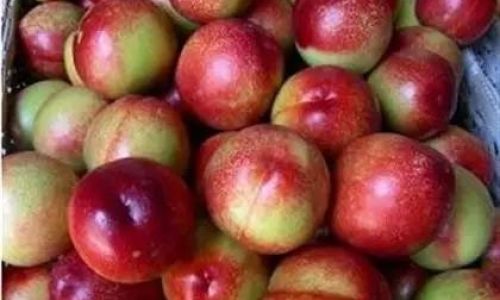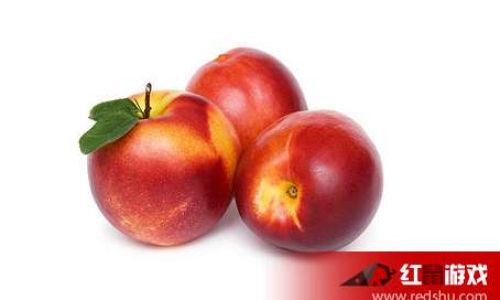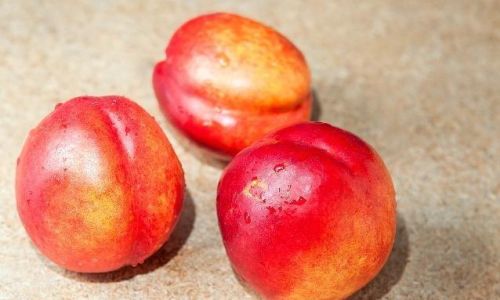Introduction

In the realm of fruits, nectarines stand out for their juicy sweetness and delicate texture. These stone fruits, often mistaken for peaches due to their similar appearance, offer a unique flavor profile that makes them a favorite among fruit enthusiasts. However, like many perishable items, nectarines require proper storage to maintain their freshness and quality. Traditionally, refrigeration is the go-to method for prolonging the shelf life of fruits. But what if you don’t have a refrigerator at hand? This article delves into various techniques for preserving nectarines fresh without relying on a fridge, ensuring you can enjoy their delightful taste even in the absence of modern cooling appliances.
Understanding Nectarine Preservation Basics
Before diving into specific preservation methods, it’s crucial to understand the basics of how nectarines ripen and spoil. Nectarines, being climacteric fruits, continue to ripen after being picked. This process involves the production of ethylene gas, which triggers biochemical changes leading to softening, color development, and an increase in sugar content. While ripening enhances flavor, it also makes the fruit more susceptible to spoilage.
Spoilage in nectarines can manifest as softening, discoloration, mold growth, or off-flavors. These changes are often accelerated by exposure to warm temperatures, high humidity, and oxygen. Therefore, effective preservation strategies aim to minimize these factors, creating an environment that slows down ripening and spoilage processes.
Choosing the Right Nectarines

The first step in preserving nectarines without a refrigerator is selecting high-quality fruits. Here are some tips for choosing the best nectarines:
- Firmness: Opt for nectarines that are firm to the touch. Avoid fruits that are already soft or have bruises.
- Color: Look for nectarines with a uniform color, indicating even ripeness. While some varieties may have a blend of colors, avoid fruits with large patches of green or uneven hues.
- Scent: Ripe nectarines should have a sweet, fragrant aroma. If they lack scent, they might be underripe.
- Stem Attachment: Choose nectarines with stems attached, as this indicates they were handled gently during harvesting.
Natural Preservation Techniques
Now, let’s explore various natural techniques for preserving nectarines without a refrigerator. These methods leverage the properties of natural materials and environmental conditions to create favorable storage conditions.
Ventilated Storage
One of the simplest methods for preserving nectarines is to store them in a well-ventilated area. Good ventilation helps reduce humidity, which can promote mold growth. Here’s how to do it:

- Basket or Tray: Place nectarines in a single layer on a wire basket or a tray with holes to allow air circulation.
- Elevated Position: Keep the basket or tray on a table or shelf away from the ground to avoid contact with moisture.
- Check Regularly: Monitor the nectarines regularly for signs of spoilage. Remove any fruits that show signs of mold or softening to prevent the spread of spoilage.
Paper Bag Storage
Paper bags provide a slightly humid environment that can slow down the ripening process while still allowing some air circulation. This method is useful if you want to ripen nectarines further but at a slower pace.
- Paper Bags: Use brown paper lunch bags or similar uncoated paper bags. Avoid plastic bags, as they trap moisture and can lead to mold growth.
- Single Layer: Place nectarines in a single layer inside the bag. If necessary, use multiple bags to avoid overcrowding.
- Puncture Holes: Puncture a few small holes in the bag to enhance ventilation.
- Store in a Cool Place: Place the bagged nectarines in a cool, dark corner of your home, such as a basement or a closet.
Sandwiching Between Paper Towels
This method involves using paper towels to absorb excess moisture and create a buffer against physical damage. It’s particularly useful for short-term storage.
- Paper Towels: Layer nectarines between paper towels, ensuring each fruit is individually wrapped or separated.
- Airtight Container: Place the layered nectarines in an airtight container, but avoid sealing it tightly to allow some air circulation.
- Cool, Dark Place: Store the container in a cool, dark location.
Dry Ice Preservation

While not as commonly accessible as regular ice, dry ice can be an effective tool for preserving nectarines without a refrigerator. Dry ice is solid carbon dioxide that sublimates directly into gas, creating a very cold environment without leaving any residue.
- Dry Ice: Obtain dry ice from a supplier. Handle it with gloves to prevent frostbite.
- Insulated Container: Use a well-insulated container, such as a cooler, to store the dry ice and nectarines.
- Ventilation: Place the nectarines in a perforated container or on a rack inside the insulated box to ensure they don’t come into direct contact with the dry ice.
- Monitoring: Check the dry ice regularly and replace it as needed. Be mindful of the cold temperatures and handle the container carefully to avoid frostbite.
Natural Coolants
Certain materials can be used as natural coolants to create a temporary low-temperature environment. These include:
- Rock Salt and Ice Water: Fill a container with ice water and add a layer of rock salt. The salt lowers the freezing point of the water, creating a colder environment. Place your nectarines in a perforated container or on a rack above the ice-salt mixture.
- Clay Pots: Clay pots can be used to store nectarines in a cool, moist environment. Bury the clay pot partially in the ground or place it in a shaded area. Line the pot with a clean cloth and place the nectarines inside.
Freezing (Without a Traditional Freezer)
If you have access to a chest freezer or any other form of cold storage that maintains temperatures below freezing, you can freeze nectarines for longer-term preservation. However, note that freezing alters the texture of the fruit, making it suitable for smoothies, baking, or cooking rather than fresh eating.

- Preparation: Wash and pit the nectarines. Cut them into slices or chunks, depending on your preference.
- Sugar Syrup (Optional): To prevent freezer burn and enhance flavor, dip the nectarine pieces in a light sugar syrup before freezing.
- Freezing: Place the prepared nectarine pieces on a baking sheet lined with parchment paper and freeze until solid. Once frozen, transfer them to freezer bags or containers.
Conclusion
Preserving nectarines fresh without a refrigerator may seem challenging, but with the right techniques, it’s entirely possible. By understanding the basic principles of fruit preservation and leveraging natural materials and environmental conditions, you can create favorable storage environments that slow down ripening and spoilage. From ventilated storage and paper bag methods to using natural coolants and even freezing alternatives, there are multiple approaches to choose from based on your specific needs and resources.
Remember, the key to successful preservation is consistent monitoring and prompt removal of any spoiled fruits to prevent the spread of decay. By adopting these techniques, you can enjoy the sweet, juicy taste of nectarines even when a refrigerator isn’t an option. So, the next time you find yourself with a bounty of these delightful fruits and no fridge in sight, don’t despair—there are plenty of ways to keep them fresh and delicious.





0 comments